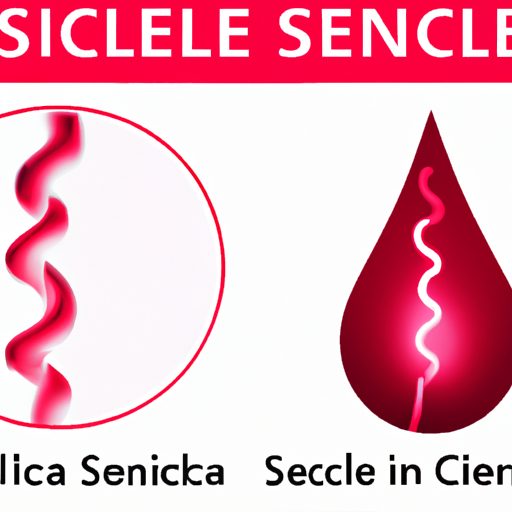
Recognizing the Signs: Common Symptoms of Sickle Cell Disease
Sickle cell disease is a genetic disorder that affects the red blood cells, causing them to become sickle-shaped. This can lead to a variety of health problems, including anemia, pain, and organ damage. It is important to recognize the signs and symptoms of sickle cell disease so that it can be properly diagnosed and managed. In this article, we will explore the common symptoms of sickle cell disease and how it can be recognized.
One of the most common symptoms of sickle cell disease is pain. People with sickle cell disease often experience episodes of severe pain, known as sickle cell crises. These episodes can last for hours or even days and can occur anywhere in the body. The pain is often described as sharp, sudden, and intense. It can be triggered by a variety of factors, including dehydration, infection, or extreme temperatures. Recognizing this type of pain and seeking medical attention is crucial for managing sickle cell disease.
Another common symptom of sickle cell disease is anemia. Anemia occurs when there are not enough red blood cells to carry oxygen to the body’s tissues. In sickle cell disease, the sickle-shaped red blood cells are fragile and can break apart easily, leading to a decrease in the number of red blood cells. This can cause fatigue, weakness, and pale skin. Recognizing the signs of anemia, such as weakness and fatigue, can help with the early diagnosis and management of sickle cell disease.
In addition to pain and anemia, people with sickle cell disease may also experience complications related to organ damage. The sickle-shaped red blood cells can block the flow of blood and oxygen to various organs, leading to complications such as stroke, acute chest syndrome, and organ failure. Recognizing the signs of these complications, such as difficulty breathing, chest pain, and neurological symptoms, is essential for seeking immediate medical attention and preventing further damage.
Other common symptoms of sickle cell disease include jaundice, swelling of the hands and feet, and frequent infections. Jaundice occurs when the liver is unable to process bilirubin, a substance produced when red blood cells break down. This can cause yellowing of the skin and eyes. People with sickle cell disease may also experience swelling of the hands and feet due to the blockage of blood flow. Frequent infections are also common, as the spleen, which helps the body fight infections, can be damaged by sickle cell disease.
Recognizing the signs of sickle cell disease is crucial for early diagnosis and management. If you or someone you know is experiencing any of these symptoms, it is important to seek medical attention. A simple blood test can help determine if someone has sickle cell disease. Early diagnosis and management of sickle cell disease can help prevent complications and improve overall quality of life.
In addition to recognizing the signs of sickle cell disease, it is important to also understand the risk factors and potential complications associated with the condition. Sickle cell disease is more common in certain populations, including people of African, Mediterranean, Middle Eastern, and South Asian descent. It is also more prevalent in regions where malaria is common, as the sickle cell trait can provide some protection against the disease. Understanding these risk factors can help with the early recognition and diagnosis of sickle cell disease.
Furthermore, it is important to recognize the potential complications of sickle cell disease and how they can be managed. Complications such as stroke, acute chest syndrome, and organ damage can be life-threatening if not properly managed. Recognizing the signs of these complications and seeking prompt medical attention is crucial for preventing further damage and improving outcomes for people with sickle cell disease.
In conclusion, recognizing the signs and symptoms of sickle cell disease is crucial for early diagnosis and management. Common symptoms of sickle cell disease include pain, anemia, organ damage, jaundice, swelling, and frequent infections. Understanding these symptoms, as well as the risk factors and potential complications associated with sickle cell disease, can help with the early recognition and diagnosis of the condition. If you or someone you know is experiencing any of these symptoms, it is important to seek medical attention for proper evaluation and management. Early diagnosis and management of sickle cell disease can help prevent complications and improve overall quality of life for those affected by the condition.












